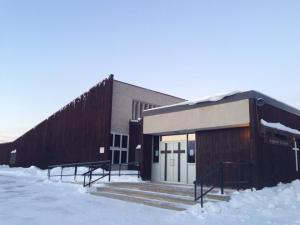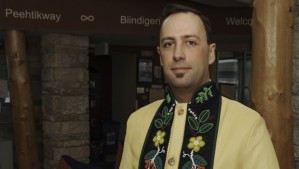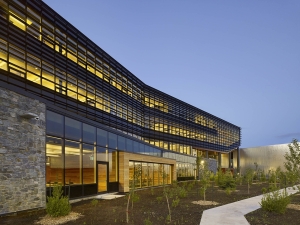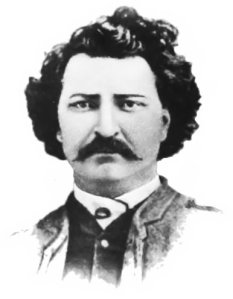

Photos by Jeanette Kimball
“For everything there is a season, and a time for every matter under heaven” it is written in Ecclesiastes. And so it is that on this day, the Feast of the Epiphany, Father Guna Pothula, the pastor who has shepherded St. Lawrence Roman Catholic Church here in Thompson, Manitoba since July 2012, making him the longest-serving clergy here, said his last Sunday mass and said goodbye to parishioners before departing home to India this week to be closer to his ageing mother, and begin a new mission. Godspeed, Father Guna.
The presence of the Catholic Church in the Thompson area dates back to 1958 when visiting priests from Thicket Portage, Pikwitonei, Wabowden and The Pas attended Thompson to celebrate mass at least once a month. At first masses were celebrated in a private home on Poplar Crescent. Later masses before a church was built were celebrated at Juniper School, the Inco camp, the Midwest Drilling Camp, the Patrick Harrison Camp, and at the Strand Theatre. The rectory and the present-day parish hall (which served as the first church) were built in 1960, while the new adjacent church on the Cree Road site opened six years later.
Churches have a season where they, too, must be rebuilt and repaired, both physically and spiritually. As Father Guna departs, St. Lawrence ends such a season of renovation and renewal to the church and parish hall, which has taken almost a decade and cost about a million dollars to complete. While his spiritual legacy as pastor and confessor is written privately on the hearts and souls of parishioners, past and present, his public legacy will be the rebuilding of St. Lawrence, a process planning began for in 2013, the year after his arrival, and concluded with the reopening of the church last June and the parish hall today. No small achievement during a global pandemic that has stretched on now for three years.
“I wasn’t going to leave until the renovations were complete,” Father Guna said today, “The roof was leaking when I arrived and it was raining in God’s house.” He noted the generosity of St, Lawrence parishioners, who “never grumbled” about years of monthly “second offertory collections” to make the roof repairs, along with donations in time and money from Knights of Columbus Thompson Council #5961, a Catholic fraternal benefit organization chartered locally with 59 members on May 6, 1967, the 31st council in Manitoba to receive its charter. Among the other funding sources was grant money from the Thompson Community Foundation, as both the church and hall serve larger public needs beyond Thompson’s Catholic community, and insurance proceeds to renovate the parish hall.
Rebuild. Fix where needed. This is our Catholic way. In 1205, Francis was praying in front of a crucifix at the abandoned San Damiano chapel near Assisi. There he had a vision in which God said, “Francis, repair my house, which is falling into ruin.” Francis listened, looked around at the crumbling chapel, and then sold some of his possessions in order to help rebuild it. He was canonized as a saint just two years after his death, on July 16, 1228, by Pope Gregory IX. Today, we know him as Saint Francis of Assisi.
More than 800 years later, another St. Francis – St. Francis de Sales – would be integral here on the other side of the world in rebuilding God’s church in a place that stands at the centre of Canada – north to south, east to west – St. Lawrence Roman Catholic Church in Thompson, Manitoba.
Francis de Sales was born in France and lived at the time of the Protestant Reformation, becoming Bishop of Geneva. He had lots of exposure to Calvinism and predestination and was noted for his diplomacy in the volatile, heated religious climate of the day in Switzerland. He’s honoured as one of the doctors of the Catholic Church and the worldwide Anglican Communion.
The Congregation of the Missionaries of St. Francis de Sales was founded by Father Peter Marie Mermier from Vouray in the parish of Chaumont en Genevois and the Diocese of Annecy in the Savoy region of France in October 1838 for parish mission, foreign mission and youth education. They are also known as the Fransalians. Pope Pius XI proclaimed St. Francis de Sales in 1923 as the patron saint of writers and journalists. After more than 11 months without a parish priest, in July 2012 two priests from India, Father Guna, and Father Subash Joseph – both members of the Congregation of the Missionaries of St. Francis de Sales, also known as the Fransalians, travelling two by two – arrived, and would be soon tasked, as Francis of Assisi was, with repairing God’s house both physically and spiritually here in the Roman Catholic Archdiocese of Keewatin-Le Pas, a vast land, which takes in some 430,000 square kilometres and stretches across the northern parts of three provinces – Saskatchewan, Manitoba and a small portion of Northwestern Ontario, and whose past includes Indian residential schools, while our present and future calls to us to bear witness in acknowledging and speaking often painful truths in the ongoing work of reconciliation with the Indigenous peoples here on the traditional treaty territory and homeland of the Nisichawayasihk Cree Nation, who have existed here since time immemorial, as well as later becoming home to other Indigenous peoples, including Métis.
After more than 11 months without a parish priest, in July 2012 two priests from India, Father Guna, and Father Subash Joseph – both members of the Congregation of the Missionaries of St. Francis de Sales, also known as the Fransalians, travelling two by two – arrived, and would be soon tasked, as Francis of Assisi was, with repairing God’s house both physically and spiritually here in the Roman Catholic Archdiocese of Keewatin-Le Pas, a vast land, which takes in some 430,000 square kilometres and stretches across the northern parts of three provinces – Saskatchewan, Manitoba and a small portion of Northwestern Ontario, and whose past includes Indian residential schools, while our present and future calls to us to bear witness in acknowledging and speaking often painful truths in the ongoing work of reconciliation with the Indigenous peoples here on the traditional treaty territory and homeland of the Nisichawayasihk Cree Nation, who have existed here since time immemorial, as well as later becoming home to other Indigenous peoples, including Métis.
The Roman Catholic Archdiocese of Keewatin-Le Pas, in Thompson in particular, is on the cutting edge of a trend that is likely to dominate the missions field in the Canadian North for perhaps the remainder of the 21st century: The re-evangelization by those once colonized, as priests from countries the church in Canada sent missionaries to in the 19th and early 20th centuries, now send their missionaries here as vocations to the priesthood in the western world have been nowhere near the necessary replacement rate since shortly after the Second Vatican Council ended in 1965.
A very different story in terms of vocations to the priesthood, however, has played out in places like Africa, parts of Asia, including the Indian subcontinent, and other areas of what are sometimes referred to as the “Global South.” There, vocations have boomed over the last 50 some years; hence the arrival of Father Guna and Father Joseph in Thompson in 2012.
Father Guna, from the village of Chennamanayunikota in Andhra Pradesh in southeastern India in the Archdiocese of Kurnool, was ordained on Feb. 10, 2007 by Bishop Paul Maipan of the Diocese of Khammam. He attended ATPM High School in Gunter in Andhra Pradesh until he joined the seminary at the age 16 in 1996. Seminarians remain in seminary for 12 years if they decide to pursue their full studies and call to ordination, Father Guna said, although some decide to leave the seminary along the way, discovering holy orders is not their calling.
After ordination, Father Guna was appointed as the assistant pastor of Nunna, in the Diocese of Vijayawada from June 2007 to May 2008. He was then appointed to the Fransalian Vidya Jyothi, Nidadavole as the procurator and was asked to teach the seminarians from June 2008 to May 2010. He also held appointments at the St. Francis de Sales High School in the town of Pamidi in the Anantapur District of Andhra Pradesh, teaching and serving as the administrator and procurator of the school.
Father Guna’s paternal grandfather was Hindu before converting to Catholicism and he still has many Hindu relatives.
Father Joseph, at his request, in 2015 was transferred to the also repair-challenged Church of St. Gertrude in Pelican Narrows, Saskatchewan, located 120 kilometres northwest of Flin Flon; 388 kilometres northeast of Prince Albert and 525 kilometres northeast of Saskatoon, and the Church of Our Lady of Seven Sorrows in Sandy Bay, at road’s end for the gravel winding road, 72 kilometres north of Pelican Narrows.
And, as the seasons once again change, Father Joseph now returns here to St. Lawrence, as pastor.
Goodbye, and our eternal thanks, Father Guna. Welcome, home, Father Joseph. Our fishing rods await your return!
https://www.youtube.com/watch?v=2gostrArMqM
John Barker has been a member of the Parish of St. Lawrence Roman Catholic Church in Thompson, Manitoba since July 2007 and a member of Knights of Columbus Thompson Council #5961 since April 2013.
You can also follow me on Twitter at: https://twitter.com/jwbarker22









